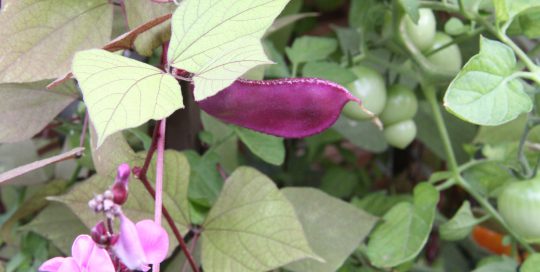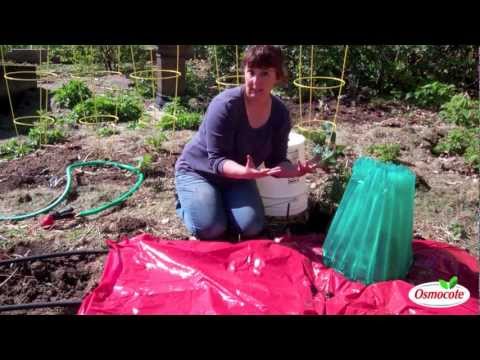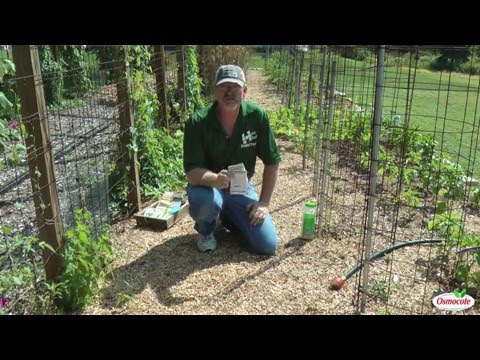Pests
Cucumber beetles, squash bugs and vine borers can quickly ruin a squash harvest. To keep the insects out, we place lightweight floating row covers over young plants. The covers let in sunlight and water, but are a great barrier. Once the plants start to flower, we remove the covers.
Squash bug (aka squash vine borer) is a clear-winged moth that flies during the day. You may see it feeding on squash flowers. They lay eggs in groups on the undersides of the leaves. The larva burrows into a stem, often at the base of the plant. This disrupts the flow of water and nutrients and the squash vine stem can wilt overnight. Flip the leaves over and squash the eggs by hand when you see them.
Spotted and striped cucumber beetles also attack squash plants. The adults feed on leaves, flowers and fruit. I carry a pail with an inch or two of soapy water (a few drops of dishwashing liquid will do) into the garden when I’m harvesting. Holding the squash leaf over the pail, I can knock the squash bugs hiding on the underside into the soapy water. It takes a few minutes but it’s an inexpensive way to get rid of the pests, which can also spread disease to the plants.
Squash (as well as pumpkin and cucumber plants) can develop powdery mildew–white powdery growth on the upper surfaces of leaves. It’s spread by fungi in both humid and dry weather and can spread rapidly among closely spaced plants. Plants that have powdery mildew should be thrown away, not placed in the compost where the fungi can remain until the next growing season. One way to avoid this is to grow plants further apart to allow for better air circulation.
Harvest
Summer squash quickly reaches picking size in about six or seven weeks from the time the seeds are sown. To avoid damaging the plant stems, use scissors or a sharp knife to harvest the fruits when they’re small before the seeds begin to form. I like to harvest summer squash when it’s just about four inches long and super tender. Handle carefully so you don’t bruise the skin or flesh. Yum!










